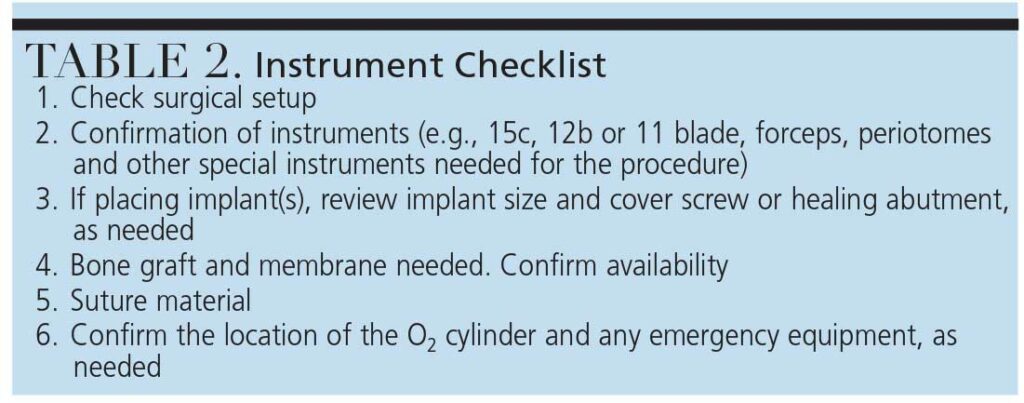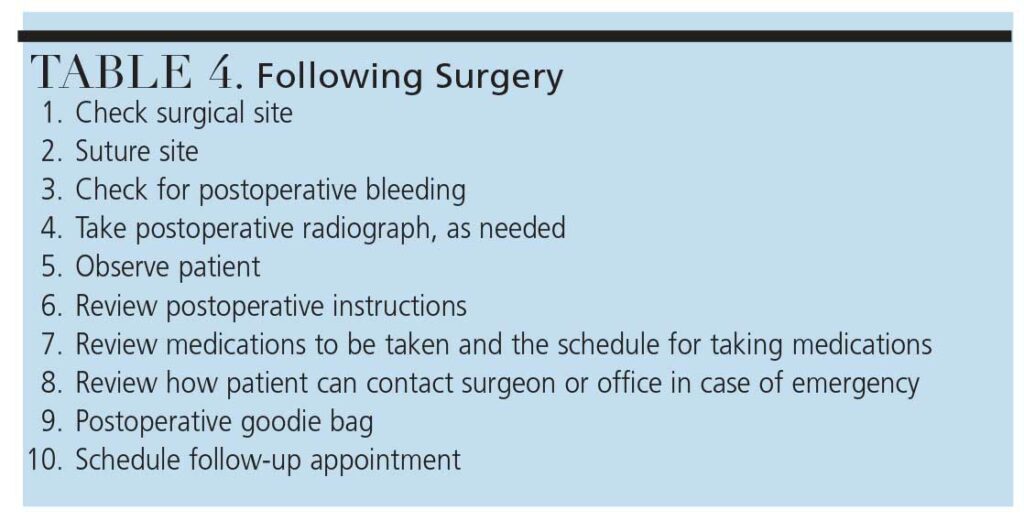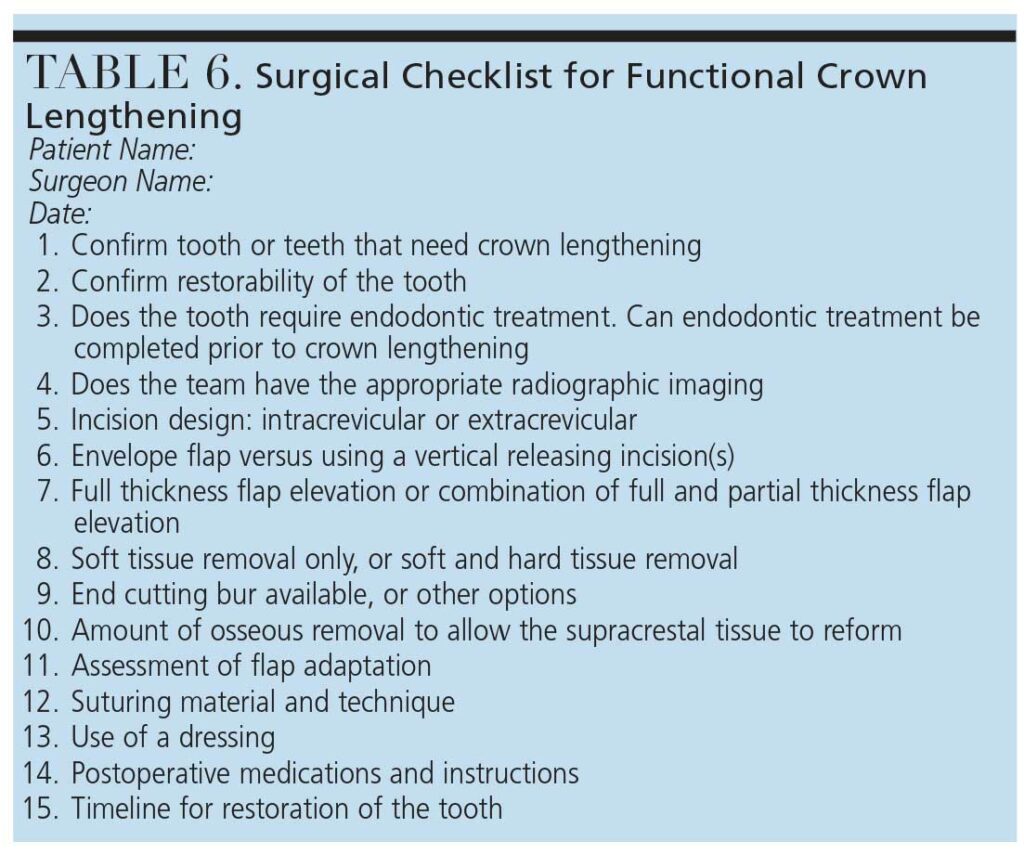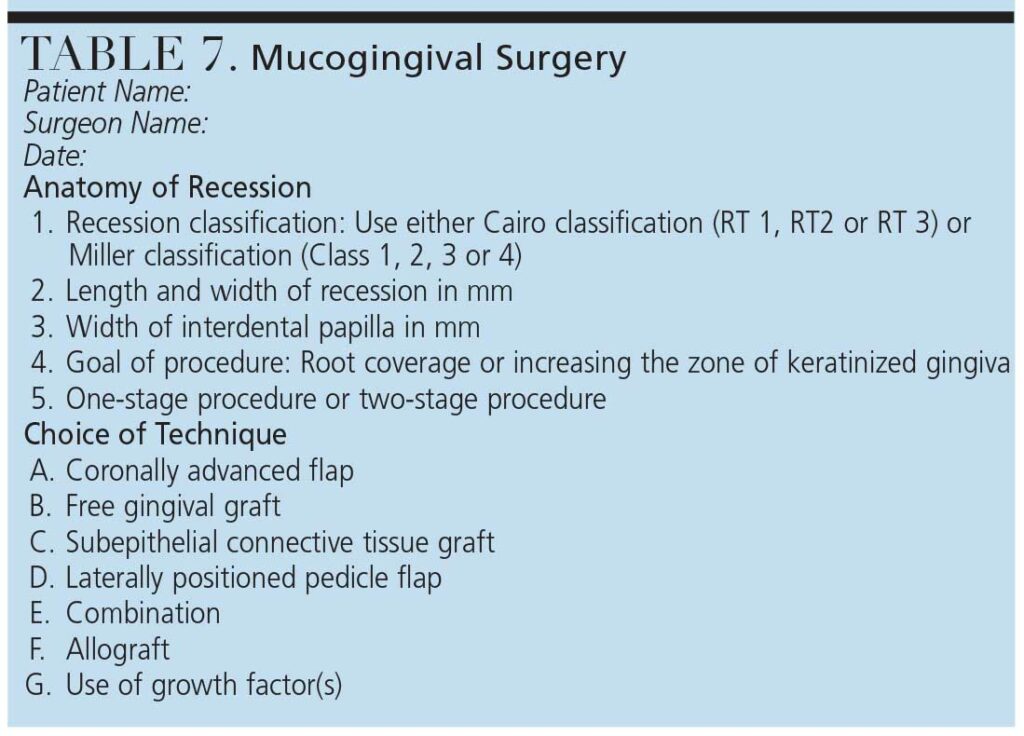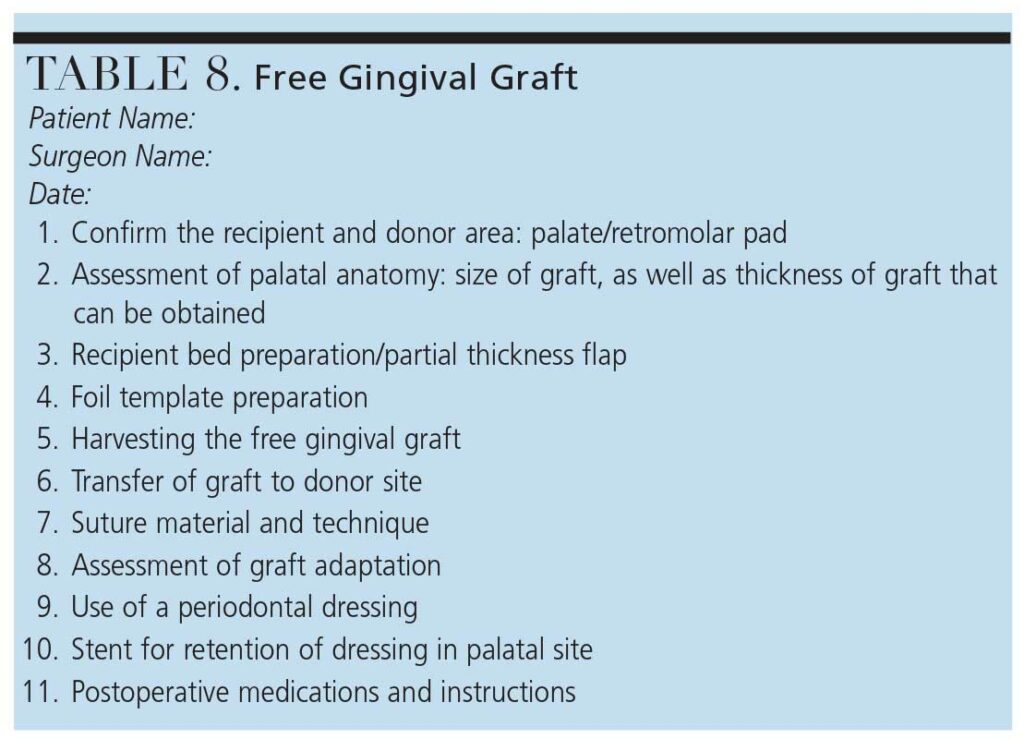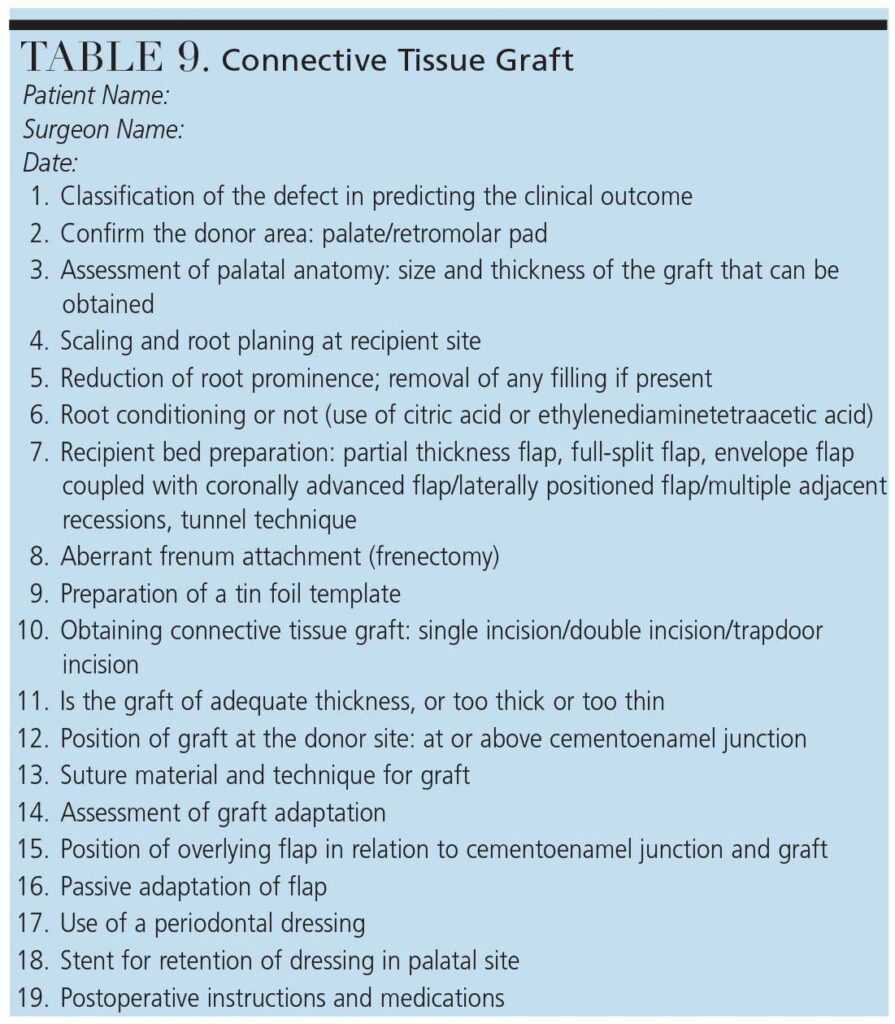
Surgical Safety Lists Support Positive Outcomes
Oral health professionals are encouraged to implement surgical checklists — along with modifications to fit individual clinician preference — to improve the quality and safety of care.
The mechanisms by which checklists enhance patient safety in the operating room include increasing communication among providers, improving delegation of various responsibilities to support staff, and mandating preprocedural pauses. A study by Schmitt et al1 found that implementation of a surgical safety checklist in the ambulatory clinic of an oral and maxillofacial surgery department led to a much smoother procedural flow. The incidents of instruments or materials missing or malfunctioning during surgery, and the frequency of incomplete postsurgical documentation and missing surgical consent forms, were considerably lower in the checklist group compared to the no-checklist group.
Although use of surgical checklists is widespread in medicine, the dental profession has been a slow adopter. While this may be due in part to the low morbidity and mortality data in dentistry, attitudes toward checklists may also play a role. However, it would appear that using checklists in dentistry — especially in the surgical specialties — is a wise idea. In an investigation of attitudes toward surgical safety checklists for ambulatory oral and maxillofacial surgery, Viswanath et al2 found 93% of respondents not currently using one would consider implementing checklists if available.
Given this background in medical and dental settings, this article proposes sample periodontal surgical checklists that can be used by a dental student, periodontal resident, early entry clinician, and/or experienced clinicians to help remember important details that may be missed during the course of surgical treatment. The intent is to enhance safe and efficient treatment and support better documentation of oral surgery procedures.
Presented in checklist form, these examples cover the following aspects of surgical care:
- Common checklists for all surgical procedures: patient checklist (Table 1)
- A brief instrument checklist (Table 2)
- Checklist during surgery (Table 3)
- Checklist following surgery (Table 4)
- Specific checklists for periodontal surgical procedures:
a. Guided tissue regeneration (Table 5)
b. Functional crown lengthening (Table 6)
c. Mucogingival surgery (Table 7): Free gingival grafts (Table 8); Connective tissue grafts (Table 9); and Acellular dermal grafts (Table 10)
References
- Schmitt CM, Buchbender M, Musazada S, Bergauer B, Neukam FW. Evaluation of staff satisfaction after implementation of a surgical safety checklist in the ambulatory of an Oral and Maxillofacial Surgery Department and its impact on patient safety. J Oral Maxillofac Surg.2018;76:1616–1639.
- Viswanath A, Balint A, Johnson III R, Rosenberg MB, Oreadi D. Surgical safety checklists are underutilized in ambulatory oral and maxillofacial surgery. J Oral Maxillofac Surg.2018;76:267–272.
This information originally appeared in Gandhi KK, John V. Implementing periodontal surgical checklists. Decisions in Dentistry. 2020;6(10):10-12.

